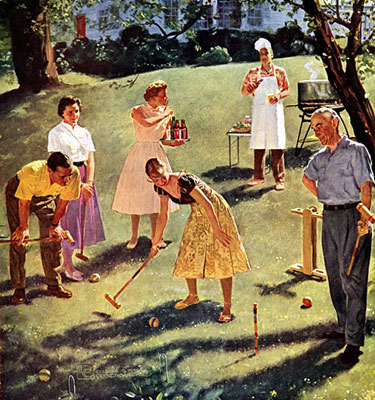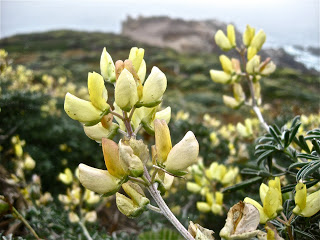 Thirty miles from San Francisco, Sonoma County is one of the world's great destinations. With beautiful farmland, a dramatic coastline, fields of wild flowers, world-class wineries and upscale restaurants, the valley offers travelers, especially oenophiles and foodies, the best of the best.
Thirty miles from San Francisco, Sonoma County is one of the world's great destinations. With beautiful farmland, a dramatic coastline, fields of wild flowers, world-class wineries and upscale restaurants, the valley offers travelers, especially oenophiles and foodies, the best of the best.
My wife and I needed some serious R&R. We wanted a trip somewhere casual, where we wouldn't get stuck in traffic jams, could enjoy beautiful countryside, have some good meals and do a bit of wine tasting. So we put our suitcases in the car with a plan to explore Sonoma County, from the inland wine growing valleys to the coast. There is nothing like a road trip to clean out the cob webs and refresh the soul.
Driving on Sonoma County's two-lane black-tops in summer, the sun owns the sky, shining down on well-tended fields and big-sky landscape. Mustard flowers blanket the fields, corn grows tall, the vines are fat with ripening grapes and cattle stroll lazily across green pastures in search of shade.
Largely agricultural, mom and pop businesses are much more common in Sonoma than in Napa, which is dominated by wealthy investors and large corporations. The 200 wineries along Route 12 and Highway 101--near the towns of Schellville, Sonoma, Glen Ellen, Kenwood, Sebastopol, Graton, Forestville, Fulton, Windsor, Healdsburg and Geyserville--are family run, for the most part.

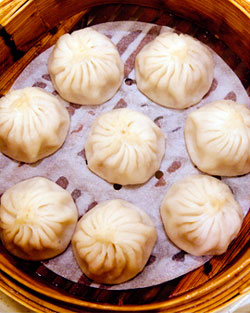 To understand the food in Richmond you must have a quick lesson on demographics and history. Don’t worry, it’s quick. Richmond began to see many immigrants from Hong Kong and throughout Asia after World War II, with a great number flowing in during the 1990s. Currently, Richmond is 65% Asian, 49% of those are Chinese. You’ll find other Asian cultures as well, particularly Southeast Asian as well as a mix of other cultures from all over the world. But this predominately Chinese makeup means restaurants, stores, shops and markets all cater to an Asian population, and visiting and eating is pure heaven for a guy like me.
To understand the food in Richmond you must have a quick lesson on demographics and history. Don’t worry, it’s quick. Richmond began to see many immigrants from Hong Kong and throughout Asia after World War II, with a great number flowing in during the 1990s. Currently, Richmond is 65% Asian, 49% of those are Chinese. You’ll find other Asian cultures as well, particularly Southeast Asian as well as a mix of other cultures from all over the world. But this predominately Chinese makeup means restaurants, stores, shops and markets all cater to an Asian population, and visiting and eating is pure heaven for a guy like me.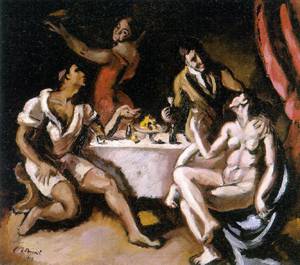 My roots are in Prague. Not my real hereditary-type roots — they lie somewhere in Lithuania, in some long-forgotten shtetl in the Pale of Settlement.
My roots are in Prague. Not my real hereditary-type roots — they lie somewhere in Lithuania, in some long-forgotten shtetl in the Pale of Settlement.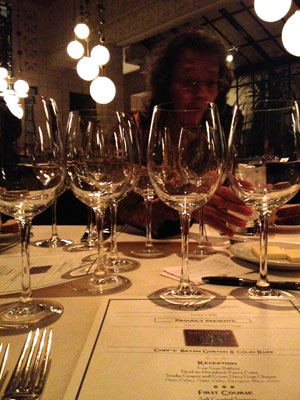 Almost every night for the last month I keep having the same dream: I am biting into a smoked grape, enrobed in a soft Arizona goat’s cheese and covered with chopped pecans and pistachios, served on a long skewer. Typically, I panic at some point in my dream because the platter is getting empty and that’s enough to wake me. Usually it is 4am, I sit up and try to comfort myself by saying “well, you ate the other 6, though saying that doesn’t help me get back to sleep. I was served these sleep altering morsels at a Heitz Cellar wine dinner at the Arizona Biltmore hotel. I never would have tried them with what I know now. “Just one more” I heard myself saying to several waiters! Have these amuse-bouche changed my sleeping pattern forever? I am no longer amused...
Almost every night for the last month I keep having the same dream: I am biting into a smoked grape, enrobed in a soft Arizona goat’s cheese and covered with chopped pecans and pistachios, served on a long skewer. Typically, I panic at some point in my dream because the platter is getting empty and that’s enough to wake me. Usually it is 4am, I sit up and try to comfort myself by saying “well, you ate the other 6, though saying that doesn’t help me get back to sleep. I was served these sleep altering morsels at a Heitz Cellar wine dinner at the Arizona Biltmore hotel. I never would have tried them with what I know now. “Just one more” I heard myself saying to several waiters! Have these amuse-bouche changed my sleeping pattern forever? I am no longer amused...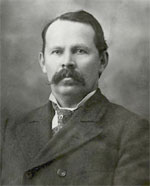
 Olympia is a charming little city in the Pacific Northwest, set down on rolling hills surrounded by forests of Douglas-fir, bigleaf maple and red cedar – a pretty, speckled egg resting in a nest of twigs.
Olympia is a charming little city in the Pacific Northwest, set down on rolling hills surrounded by forests of Douglas-fir, bigleaf maple and red cedar – a pretty, speckled egg resting in a nest of twigs. This is Downtown Olympia, with its century-old buildings, its perfectly-proportioned Capitol, its tree-lined streets on which people drive politely and you can always find a place to park – often without a meter – near the still-family-run bookstore or café or bike shop you want to go to.
This is Downtown Olympia, with its century-old buildings, its perfectly-proportioned Capitol, its tree-lined streets on which people drive politely and you can always find a place to park – often without a meter – near the still-family-run bookstore or café or bike shop you want to go to.